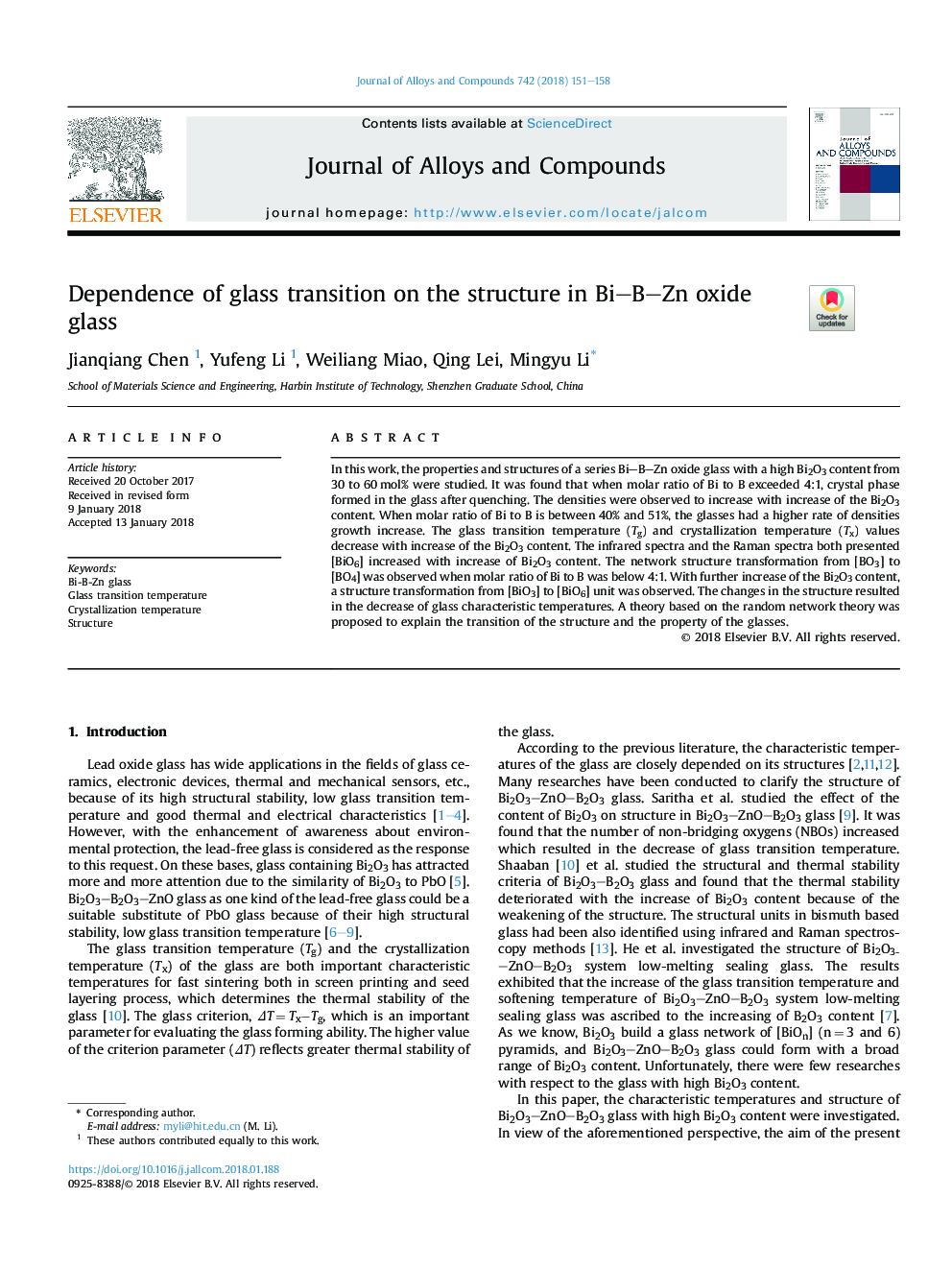| Article ID | Journal | Published Year | Pages | File Type |
|---|---|---|---|---|
| 7993160 | Journal of Alloys and Compounds | 2018 | 8 Pages |
Abstract
In this work, the properties and structures of a series BiBZn oxide glass with a high Bi2O3 content from 30 to 60â¯mol% were studied. It was found that when molar ratio of Bi to B exceeded 4:1, crystal phase formed in the glass after quenching. The densities were observed to increase with increase of the Bi2O3 content. When molar ratio of Bi to B is between 40% and 51%, the glasses had a higher rate of densities growth increase. The glass transition temperature (Tg) and crystallization temperature (Tx) values decrease with increase of the Bi2O3 content. The infrared spectra and the Raman spectra both presented [BiO6] increased with increase of Bi2O3 content. The network structure transformation from [BO3] to [BO4] was observed when molar ratio of Bi to B was below 4:1. With further increase of the Bi2O3 content, a structure transformation from [BiO3] to [BiO6] unit was observed. The changes in the structure resulted in the decrease of glass characteristic temperatures. A theory based on the random network theory was proposed to explain the transition of the structure and the property of the glasses.
Related Topics
Physical Sciences and Engineering
Materials Science
Metals and Alloys
Authors
Jianqiang Chen, Yufeng Li, Weiliang Miao, Qing Lei, Mingyu Li,
